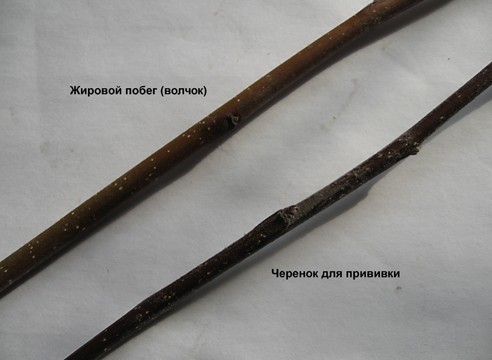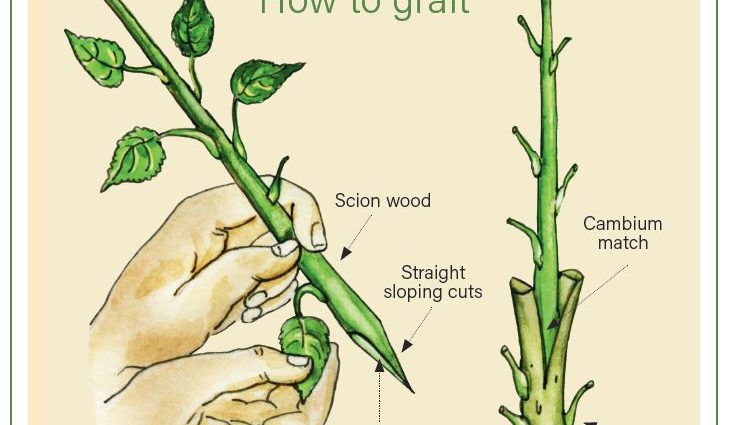Contents
Every gardener, whether professional or amateur, at least once in his life has encountered the grafting of fruit branches. Since the apple tree is the most common fruit tree in our gardens, its grafting is carried out most often. In order for everything to be successful, it is necessary to strictly follow all the rules. In most cases, a favorable outcome depends on properly prepared apple cuttings for grafting.
When to harvest cuttings
Apple tree cuttings for grafting can be started at different times.
Most often, preparation is carried out in autumn (end of November). The most suitable time for harvesting is the period after the cessation of sap flow in the tree. This period begins after the apple tree has completely shed its leaves and entered a dormant state.
Some gardeners claim that harvesting can be done at the beginning of winter. For winter preparation of cuttings, the period from the beginning of winter to mid-January is suitable. After January, thaws may occur, and this will significantly worsen the survival rate of the cutting (it may not take root at all), which was cut during this period. There is an explanation for this phenomenon. It is believed that in this case, the movement of plastic substances to the tops of the shoot occurs when the sun warms up. They move in branches. Cutting off such a branch and grafting it to the rootstock will be ineffective due to the fact that it already lacks the nutrients that are necessary for the grafting elements to grow together and callus build up. Also, during the winter period, freezing of young shoots may occur.
Other gardeners argue that for effective grafting, apple cuttings can be harvested in December or February, as well as in March. But in this case, weather conditions should be taken into account. The air temperature at the time of cutting should not be lower than -10 degrees Celsius. It is this temperature that contributes to the best hardening of annual shoots. If harvesting is carried out at the beginning of winter, then it must be carried out after the first frost. If the winter was not very frosty, and the wood on the apple tree was not damaged, then the stalk can be harvested in late February or early March.
Also, the scion can be prepared in the spring. In this case, young shoots are cut before the bud break period. If the buds on the shoot have already blossomed, then they are not used for vaccination. In some cases, harvesting can be done during the March pruning of the apple tree.
Some gardeners suggest harvesting the cutting just before you start grafting it.
Grafting of apple cuttings can be carried out both in winter and in spring. The time of harvesting the scion directly depends on its time. If the vaccination will be carried out in winter, then the scion, respectively, is prepared at the beginning of winter, and if in the spring, then either at the beginning of winter or in early spring.
For winter-hardy varieties of apple trees, both the preparation of a scion in autumn and winter are equally suitable.
Of all the harvesting periods listed above, 100% of the grafting result is obtained by harvesting cuttings at the beginning of winter.
A video showing spring or winter grafting can be found below.
How to prepare
In order for the vaccination to go as it should, it is necessary to choose the right time for harvesting, as well as to carry out the harvesting itself in a quality manner.
To do this, you must follow the following instructions:
- trees should be selected in advance from which the scion will be taken;
- in order for the cutting to take root well, you need to use only young, healthy, as well as fruitful branches of the apple tree;
- scion is made from annual shoots. If it is impossible to use one-year shoots, two-year shoots are used;
- branches should grow from the illuminated part of the bark;
- cutting begins only after the end of the growing season or before bud break;
- cuttings are not harvested from branches that grow vertically (from tops or wen);
- at the end of summer, pinch the tops of the buds on the selected branch. This is done so that the shoots, after vaccination, ripen well. But you can use regular branches as well;
- for grafting, ripe shoots are best suited, the diameter of which is not less than 5-6 mm, they should have an apical growth bud and leaf side buds;
- do not make the scion too short (about 10 cm);
- crooked, thin and damaged branches are not suitable as a scion;
- you need to cut the shoots below the growth neck with a piece of two-year-old wood up to 2 cm. Otherwise, the scion may deteriorate during storage.

After the scion has been cut, it must be collected in bunches according to varieties (if several trees are grafted with different varieties at once). Before that, in order for the cuttings to be stored for a long time and give a good harvest after grafting, they must be wiped with a damp cloth and sorted by size. Then the bundles must be tied with wire and be sure to hang a tag on which to indicate the variety, cut time and the place where these cuttings will be grafted in the spring (tree variety).
Video “Preparing cuttings for grafting an apple tree”
All stages of harvesting cuttings can be additionally viewed on the video.
How to store
After the shoots have been cut and tied, they should be stored for storage. To do this, they are placed in a clean plastic bag and placed on the north side of your house or barn.
There are the following ways of storing scion:
- bundles can be stored outside. In this case, a small piece of land should be cleared of snow, grafts should be put there and covered with snow on top and compacted;
- cuttings can be stored in the refrigerator. In this case, they must be wrapped first in wet burlap, and then in paper. After the bundles are placed in polyethylene. Periodically, you need to inspect the cuttings to prevent them from drying out or mold development;
- sections can be stored in wet sand, peat, sawdust or any other suitable substrate (the oldest and most proven method); storage temperature should be above zero, but low. Periodically it is necessary to moisten the substrate. In this case, the cuttings are kept fresh and swollen;
- the scion can be stored in the basement at temperatures from zero to +3 degrees Celsius. The bundles are placed vertically with the cuts down, and from the sides they are spudded with sand or sawdust. The humidity of the substrate must be maintained throughout the winter.
- also rootstocks can be stored in limbo on a veranda, balcony, tree. But in this case, they must be well insulated with a clean and sterile bag. Periodically they need to be checked to prevent the germination of sections.

Sometimes, when cuttings need to be preserved until spring grafting, they are buried in the ground in the garden. The depth of the pit is one shovel bayonet. From above they cover with fir paws from moles, and then they throw plant debris and leave a mark (for example, a peg).
By following the above requirements and instructions, you can achieve successful vaccination, and the graft will bear many fruits.










